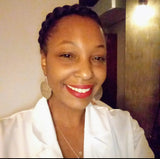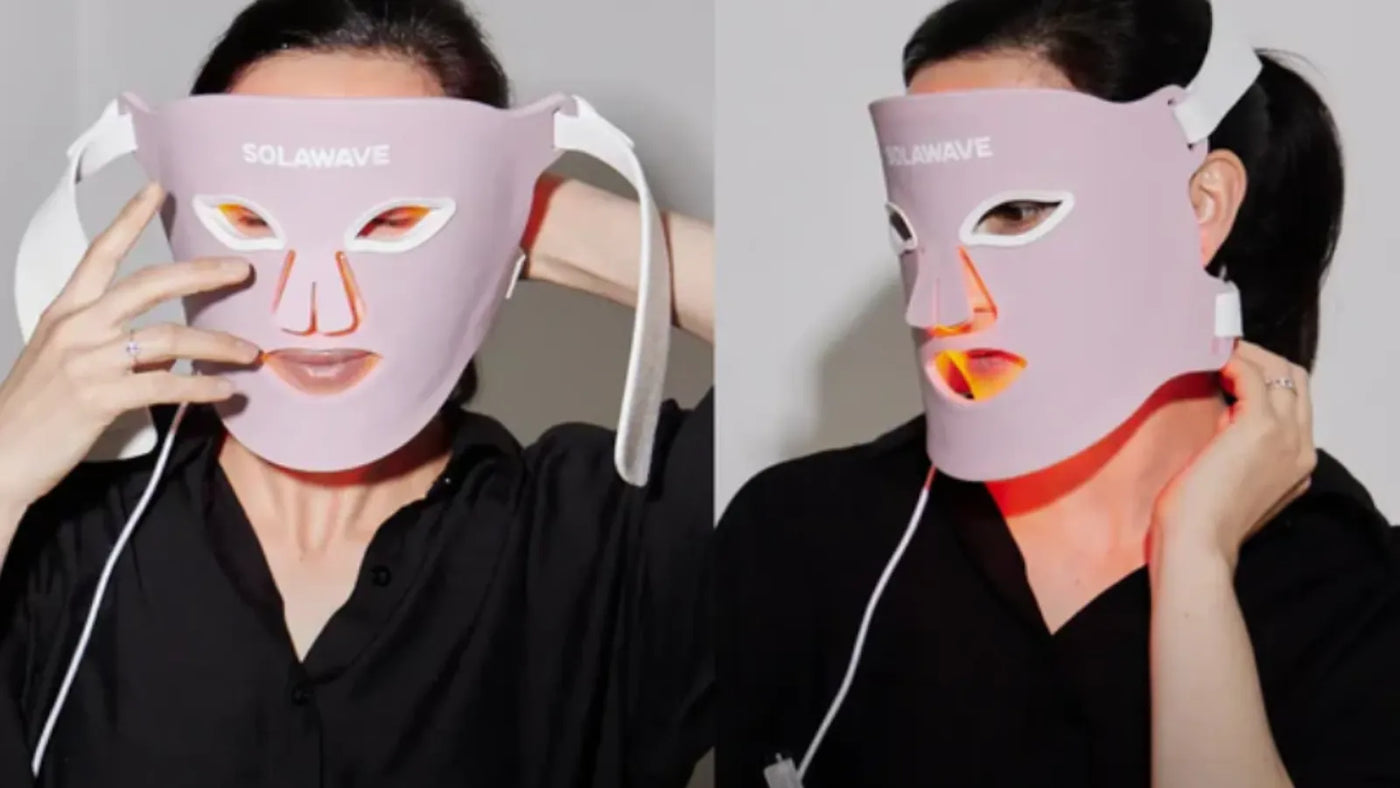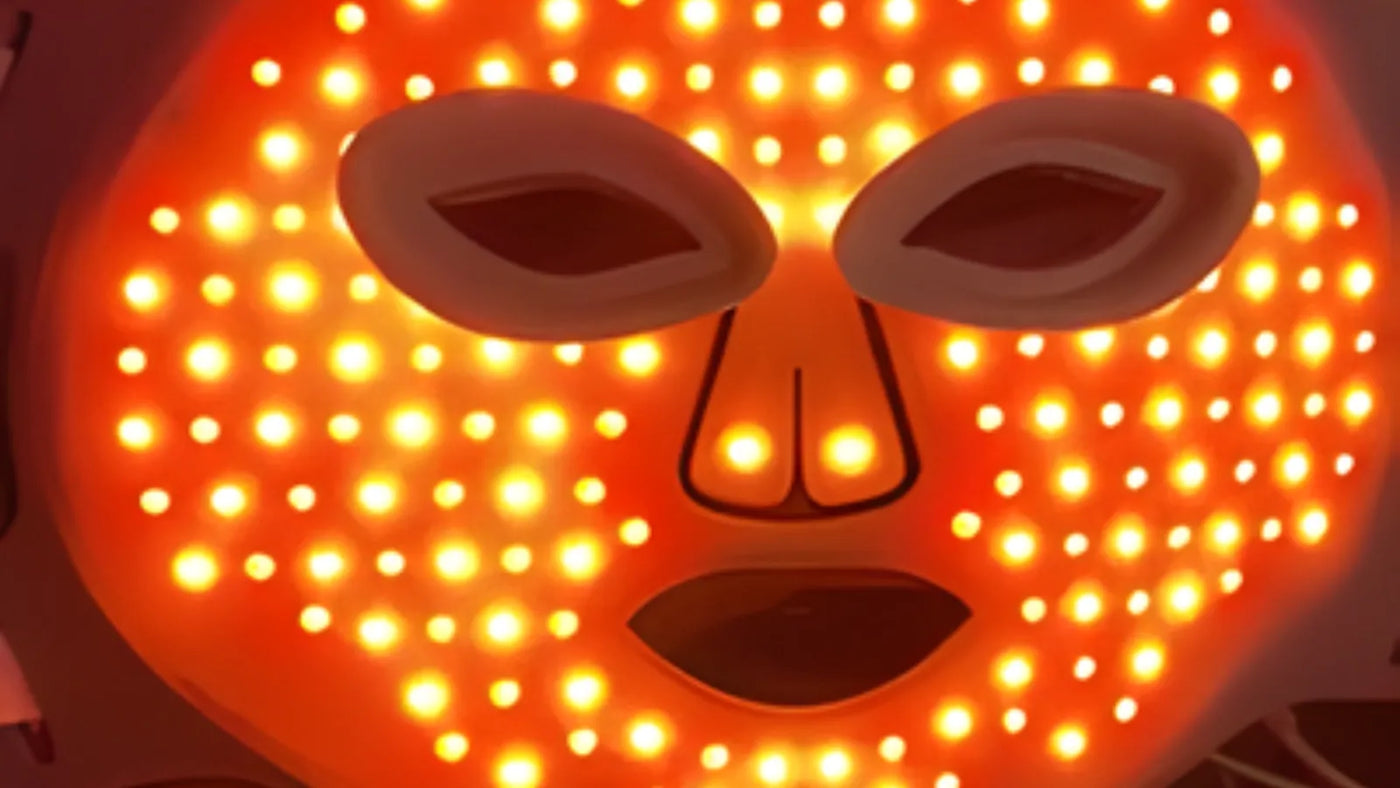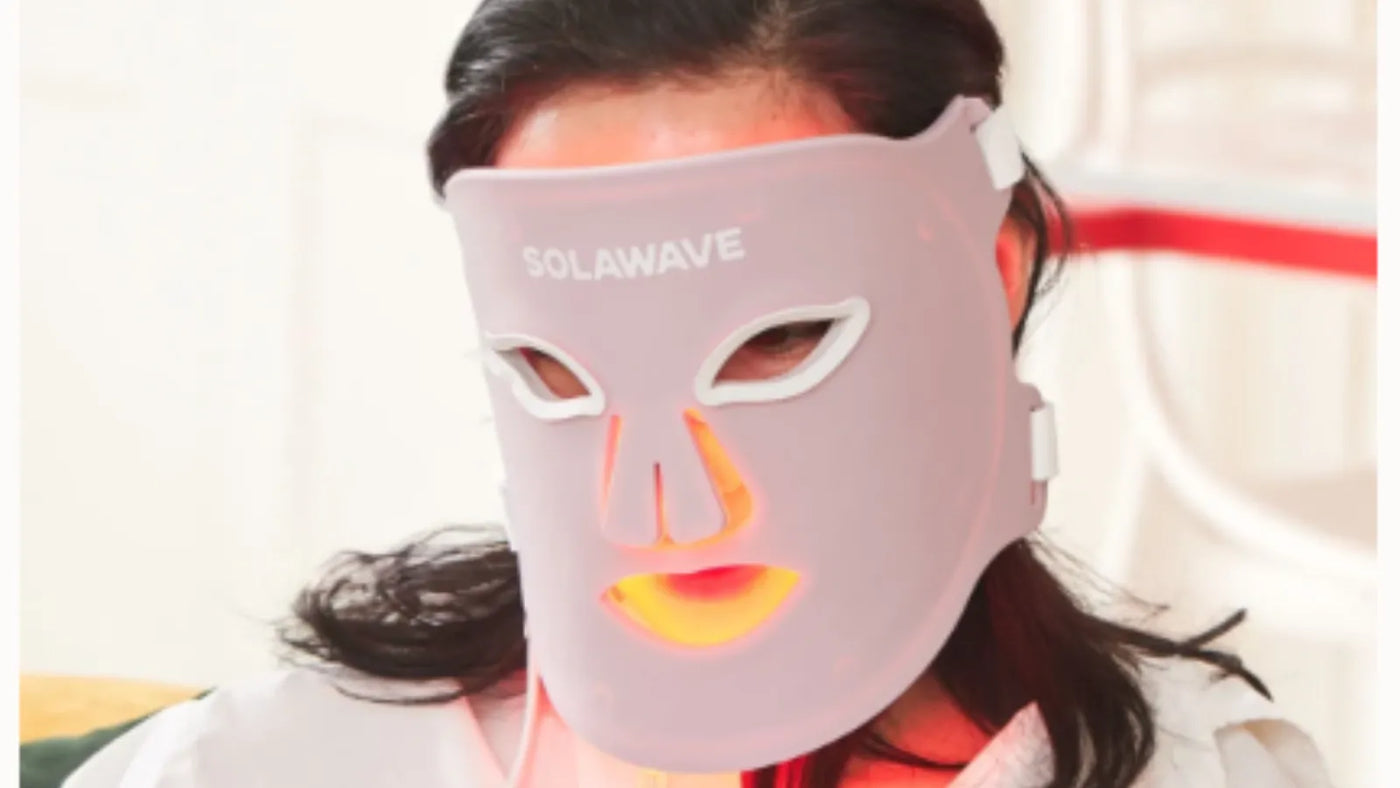
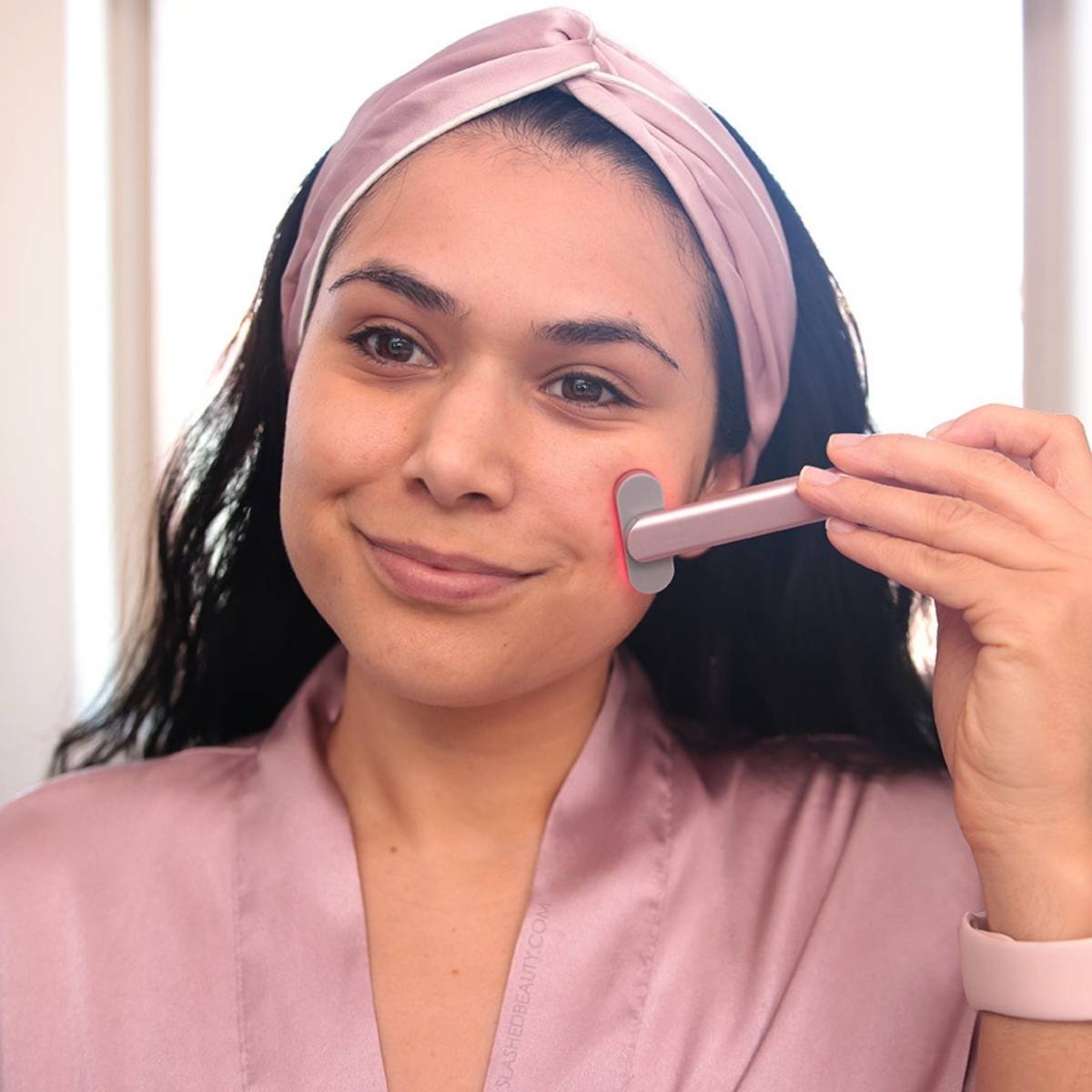
Light Therapy for Hormonal Acne: Can It Help?
Light Therapy has become a popular option for addressing a variety of skin concerns, from pimples to visible signs of skin aging. While many people turn to Blue Light and Red Light Therapy for clearer, healthier-looking skin, not all types of acne respond the same way. Hormonal acne, which is triggered by internal hormonal changes rather than bacteria on the skin’s surface, often appears as deep, stubborn pimples along the jawline and chin. In this article, you’ll learn how Light Therapy works and whether it can truly help with hormonal acne.
What Is Light Therapy?
Light Therapy, sometimes called photobiomodulation, uses specific wavelengths of light to interact with your skin at a cellular level. This technology is designed to support your skin’s natural renewal and repair processes by delivering energy that your cells can use. Light Therapy is trusted by dermatologists, estheticians, and skincare professionals for its ability to visibly improve the look and feel of your skin over time.
There are different types of Light Therapy, each using a unique color or wavelength to reach various layers of your skin. The most common types in skincare are Blue Light Therapy and Red Light Therapy. Blue Light targets the surface of your skin, while Red Light and near-infrared light penetrate deeper to support collagen and elastin production.
In skincare routines, Light Therapy is often used to help skin look firmer, smoother, and more radiant. Devices with medical-grade LEDs deliver these wavelengths safely and effectively, making it easy to incorporate Light Therapy into your daily or weekly regimen. With consistent use, many people notice visible improvements in skin texture, tone, and overall appearance.
How Blue Light Therapy Works
Blue Light Therapy uses a specific wavelength of blue light to target the upper layers of your skin, where it interacts directly with oil glands and acne-causing bacteria. When Blue Light reaches your skin, it helps destroy the bacteria responsible for causing pimples, especially a type called P. acnes. By reducing these bacteria, Blue Light Therapy helps deter future pimples and supports a visibly clearer complexion.
Another benefit of Blue Light Therapy is its ability to help regulate sebum, or oil, production. Excess oil can clog pores and contribute to the development of pimples. By minimizing oiliness, Blue Light Therapy helps your skin feel less greasy and appear more balanced, making it easier to maintain a refreshed, healthy-looking appearance.
Blue Light Therapy is especially popular for treating pimples and zits because it offers a gentle, non-invasive approach. Unlike harsh chemical treatments or procedures that require downtime, Blue Light Therapy fits easily into your routine and can be used alongside your favorite serums and moisturizers. Many people notice visible improvements in the appearance of active pimples within just a few days of consistent use, making it a go-to option for anyone looking for fast, targeted care.
What To Know About Hormonal Acne
Hormonal acne is triggered by shifts in your body’s hormone levels, not by bacteria on the skin’s surface. These hormonal fluctuations often happen during puberty, menstrual cycles, pregnancy, or menopause, and can also be influenced by stress or certain lifestyle factors. When hormone levels change, your skin’s oil glands may produce more sebum, which can clog pores and lead to pimples.
Hormonal acne usually appears as deep, tender bumps under the skin, most commonly along the jawline, chin, and lower cheeks. These pimples can be red, swollen, and sometimes painful to the touch. Unlike surface-level pimples, hormonal acne often doesn’t come to a head and can linger for days or even weeks.
What sets hormonal acne apart from bacterial acne is its root cause. While bacterial acne is mainly triggered by bacteria and excess oil on the skin’s surface, hormonal acne starts from within due to internal changes in your body’s chemistry. This means that treatments targeting bacteria, like Blue Light Therapy, may not address the underlying factors driving hormonal acne. Instead, managing hormonal acne often requires a more holistic approach that considers your overall health, lifestyle, and skincare routine.
Can You Use Light Therapy for Hormonal Acne?
When it comes to hormonal acne, Light Therapy—especially Blue Light Therapy—has some clear limitations. Blue Light Therapy is designed to target acne-causing bacteria and help control excess oil on the skin’s surface. However, because hormonal acne is triggered by internal hormonal fluctuations rather than bacteria, Blue Light Therapy doesn’t address the root causes of these deeper, stubborn pimples.
That said, Blue Light Therapy may still offer some minor benefits for hormonal acne. By reducing surface bacteria and helping to balance oil production, it can support a cleaner, less oily complexion. This might help prevent additional pimples from forming on top of existing hormonal acne, but it won’t resolve the underlying hormonal triggers that cause these breakouts in the first place.
Red Light Therapy, on the other hand, is known for its ability to visibly calm redness and soothe irritated skin. If your hormonal acne is accompanied by visible redness or inflammation, Red Light Therapy can help your skin look calmer and more even-toned. While this can improve the overall appearance of your skin, it’s again important to know that Red Light Therapy does not address the internal hormonal changes that lead to hormonal acne.
In short, while both Blue Light and Red Light Therapy can help with some of the visible symptoms—like surface bacteria, oiliness, and redness—they do not target the root causes of hormonal acne. Light Therapy can be a helpful addition to your routine for improving the look of your skin, but it is not an effective solution for treating hormonal acne itself.
Proven Approaches for Managing Hormonal Acne
Managing hormonal acne often requires a combination of lifestyle adjustments, skincare habits, and sometimes professional guidance. Since hormonal acne is rooted in internal changes, addressing it usually goes beyond surface-level treatments.
One of the most effective ways to manage hormonal acne is to maintain a consistent skincare routine that includes gentle cleansing and non-comedogenic (won’t clog pores) products. Look for ingredients like salicylic acid or retinoids, which can help keep pores clear and support skin renewal. Avoid harsh scrubs or overly drying products, as these can irritate your skin and make acne worse.
Lifestyle factors also play a significant role. Managing stress, getting enough sleep, and eating a balanced diet can all help support your skin’s health. For some, reducing dairy or high-glycemic foods may make a difference, though results can vary from person to person.
If over-the-counter options aren’t enough, consulting with a dermatologist can open the door to additional solutions. Prescription treatments, such as topical retinoids, oral contraceptives, or medications that regulate hormones, may be recommended based on your unique needs. These approaches are designed to address the internal triggers of hormonal acne and can be tailored to your specific situation.
Remember, finding the right approach for hormonal acne often takes time and patience. Combining healthy habits, targeted skincare, and professional support can help you manage hormonal acne and support healthier-looking skin.
Conclusion
Light Therapy, especially Blue Light Therapy, is well-known for targeting acne-causing bacteria and helping control oil, but it doesn’t address the root causes of hormonal acne, which are driven by internal hormonal changes. While Blue Light and Red Light Therapy can help with surface-level symptoms like oiliness and redness, they aren’t effective solutions for hormonal acne itself. If you’re struggling with persistent hormonal acne, consider reaching out to a skincare professional who can help you find a personalized approach that fits your needs.
Disclaimer: This article is intended for informational purposes only and should not be interpreted as medical advice or guidance. Always seek medical advice and care from a trusted healthcare professional.
Sources:



















